If you are looking for some new sources of inspiration, we’d like to introduce you to some distinctive artists, designers, and illustrators—both past and present—that we think ‘you should know.’ Some may be lesser known while others may seem vaguely familiar, either way you will discover unique talents that might just influence your next project.
The youngest of ten children to immigrant parents from Scandinavia, Haddon Hubbard Sundblom was born during the summer of 1899 in Muskegon, Michigan. Shortly after his mother’s death, he dropped out of school to help support his family. With only an 8th grade education, he spent the rest of his life in a continual quest for knowledge—taking years of correspondence courses and night school classes. Studies in architecture, commerce, and various artistic disciplines from noted establishments like the Chicago Art Institute and American Academy of Art rounded out his educational pursuits.1
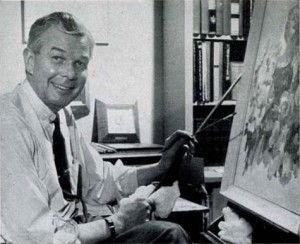
In 1920, a 21-year-old Sundblom was hired as an apprentice with the reputable Chicago-based illustration firm the Charles Everett Johnson Studio. Working with a veritable who’s who of early twentieth century commercial artists proved to be an invaluable experience for the budding illustrator.1
“[The Studio] boasted a galaxy of stars. I ran errands, washed brushes, etc. for Mac Barclay, Will Foster, Frank Snapp, Harry Timmins, Maurice Logan, Roy Spreter, Vaughn Flannery, and Walter Stocklin, to mention just a few. One was bound to learn something in that kind of company,” said Sundblom.1
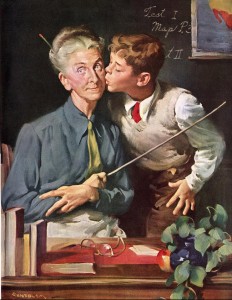
Through his course work and on-the-job training, Sundblom became a master of the alla prima or wet-on-wet technique of oil painting. This process requires the artist to apply each layer of wet paint to the previous layers while all of the paint is still wet. The artist has to work rapidly and deliberately before the first layers of paint dry— generally completing the work in a single sitting.2 As Sundblom’s work attests, paintings in this technique tend to have an economy of colors and brushstrokes—resulting in a sense of vibrancy and energy in the finished work.3
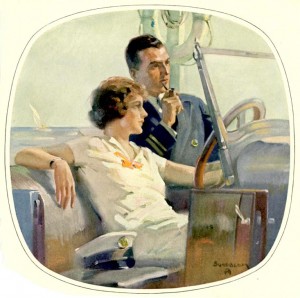
Sundblom sought additional inspiration by studying the works of famed artists like John Singer Sargent and Joaquin Sorolla as well as illustrators like Howard Pyle and Pruett Carter. While these masters were all proponents of the alla prima technique, they also were noted for imparting a warm and luminous quality to the figures in the scenes they painted. The same radiant glow of sun-lit faces and figures became a trademark of Sundblom’s visual style.3
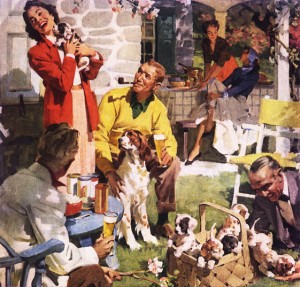
Despite working during the Great Depression and in the middle of wartime, Sundblom developed imagery of regular people enjoying life to the fullest—experiences with family and friends or times of work and leisure. His compositional scenes were hopeful with a strong sense of optimism and resilience.4 His cheerful and energetic depictions of middle-class life were universally appealing to a growing consumer-based society.5

Frederic Whitaker, celebrated artist and author, wrote of Sundblom’s work in a 1956 issue of American Artist magazine. “His paintings are always sunny. They and their characters and settings breathe an air of refinement.” Whitaker continued, “[Sundblom’s scenes] are romantic, idealistic, melodious, wholesome, healthy, pleasing. They look good. His men are men, his women desirable, his children adorable. He gives the human race cause for self-respect. Never do his compositions ever suggest anything sordid or depressing, either in color or in subject matter. They have what people like!”5

Such high-praise from his peers only shows why Sundblom was such a well sought after illustrator. At the peak of his career his extensive client list included a cavalcade of the top brands of his day including many that are still prominent like Coca-Cola, Quaker Oats, Nabisco, Maxwell House, Palmolive, and Colgate.6
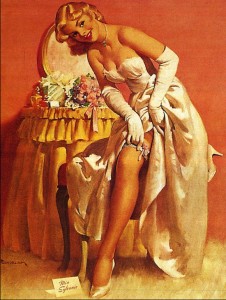
According to Roger T. Reed, president of the New York gallery Illustration House, “Sundblom gets pigeonholed as the painter of Coca-Cola Santa Clauses, but this trivializes his central place in twentieth century advertising art. More than any artist including Norman Rockwell, Sundblom defined the American Dream in pictures, proved by his work for virtually the entire Fortune 500.”7
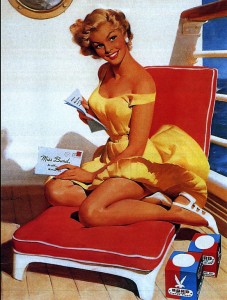
Just as Sundblom had benefited from his early studio apprenticeship, he is credited with developing the next generation of commercial artists. His various studios were a training ground for up-and-coming illustrators who wanted to learn at the foot of a true master. Always generous with his staff and modest about his impact on the industry, Sundblom’s circle of influence extended to hundreds of artists. Creating famous advertising campaigns, glamorous pin-up girls and noted brand characters, his apprentices went on to join agencies or start studios of their own throughout the country.7
Whitaker stated, “Through my art association activities I meet many commercial artists, and having asked about their beginnings, I am amazed at the size of the majority who reply, ‘Oh, I began with [Sundblom].’”8
Sundblom’s influence on the field he so loved cannot be overstated. His imagery, which has reached iconic status over the years, even pops up today in magazines, on billboards, and through the “vintage reproduction” marketplace—tin signs, magnets, t-shirts, etc. Although he passed away in 1976, his prolific body of work still provides inspiration to yet another generation of artists.
1 Peng, Leif. “Haddon Sundblom’s Early Years.” Today’s Inspiration. 13 Dec. 2010. Web. 6 Nov. 2013. http://todaysinspiration.blogspot.com/2010/12/haddon-sundbloms-early-years.html
2 “Wet-on-wet.” Wikipedia: The Free Encyclopedia. 3 Sept. 2013. Web. 22 Dec. 2013. http://en.wikipedia.org/wiki/Wet-on-wet
3 Peng, Leif. “Haddon Sundblom and the ‘First Stroke.” Today’s Inspiration. 14 Dec. 2010. Web. 6 Nov. 2013. http://todaysinspiration.blogspot.com/2010/12/haddon-sundblom-and-first-stroke.html
4 Reed, Roger T. “Coca-Cola Advertising Art.” Illustration House. Sept. 2012. Web. 22 Dec. 2013. http://www.illustrationhouse.com/exhib/coke/coke_intro.html
5 Peng, Leif. “Haddon Sundblom: ‘[His paintings] have what people like!’” Today’s Inspiration. 7 Dec. 2010. Web. 20 Dec. 2013. http://todaysinspiration.blogspot.com/2010/12/haddon-sundblom-his-paintings-have-what.html
6 “Biography: Haddon Sundblom.” Coca-Cola Company. Web. 6 Nov. 2013. http://assets.coca-colacompany.com/3d/ba/8a77c1ff4cad89b4308f2ec08f57/bio_haddon_sundblom.pdf
7 Peng, Leif. “The Sundblom School of Illustration: ‘…its best returns came from the mutual sharing of various abilities.’” Today’s Inspiration. 24 Dec. 2010. Web. 20 Dec. 2013. http://todaysinspiration.blogspot.com/2010/12/sundblom-school-of-illustration.html
8 Peng, Leif. “The Sundblom Circle.” Today’s Inspiration. 16 Dec. 2010. Web. 20 Dec. 2013. http://todaysinspiration.blogspot.com/2010/12/sundblom-circle.html
Sundblom, Haddon. Assorted Oil Painting Illustrations. Today’s Inspiration. Web. 20 Dec. 2013. http://todaysinspiration.blogspot.com/
Lora Davis Stocker is a freelance designer, illustrator and artist based in the Greater Triangle Area of NC. With diverse experience in print and digital environments, Lora enjoys working with clients of all types from small, mom and pop businesses to large global brands.